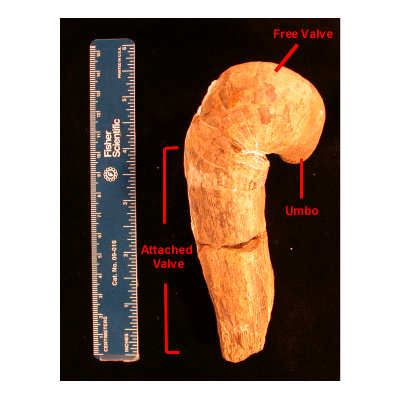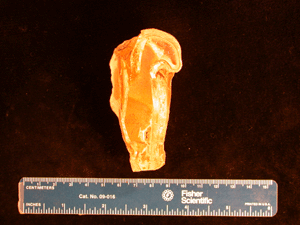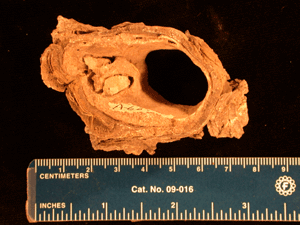



Rudists: More on Morphology
 |
What does a rudist look like? Basic external features of rudists include the umbo and thick, asymmetric right and left valves. The umbo is the rounded protusion found just above the hinge and the hinge is the pivoting point where the two valves meet. There are three main valve plans found in rudists. These plans (from Perkins 1969), are based on relative size of the valves and the level of valve coiling:
|
|
What do they look like on the inside? Important characteristic bivalve features include teeth and sockets which are found in the hinge to prevent shell misplacement, adductor muscles to pull the valves together, and ligamental structures for the movement of the valves. In younger rudist families the ligament function is lost (which will be discussed in more detail later) and there is a question about what replaced this function. Skelton (1976) believes the shell did not open fully and the small opening that existed between the valves was enough for feeding and waste processes. On the other hand, Seilacher (1998) suggests the existence of diductor muscles for opening the valves, but this has yet to be fully proven. Soft tissues are rarely preserved in the fossil record so the study of rudist organs can be a difficult task. |
(Above) Notice the tooth near the center of this valve (from a Masneronia). |
|
(Above) A longwise section of Coralliachama orcutti. |
(Above) Interior cross section of Monopleura Salazari. |
Evolution of rudist morphology





